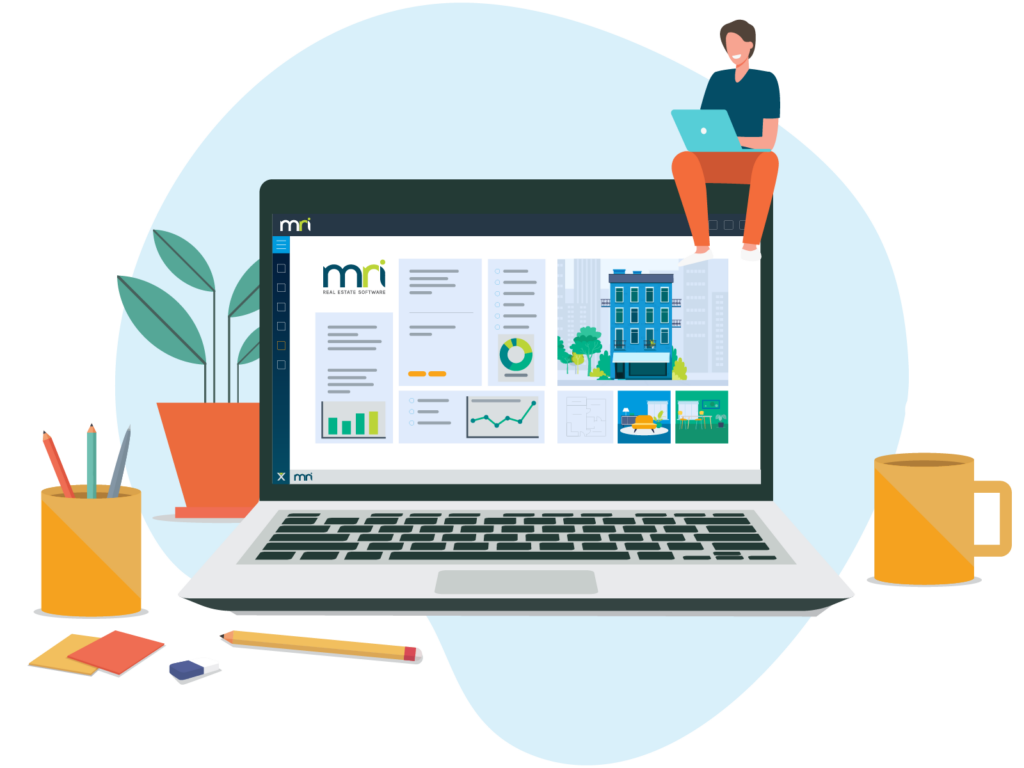Partnering with JLL to create an open tech ecosystem for a holistic view of operations and finances
About JLL
For generations, JLL has been one of the world’s most recognised and respected real estate brands. A Fortune 500 company, it has operations in over 80 countries, more than 100,000 employees and annual revenue of over $20 billion. Its comprehensive portfolio of services includes investment and asset management, sales and leasing, project management and development.
Recently, the company’s strategy has centred on an industry-leading drive for digital innovation, investing heavily in a range of property technology and AI-based platforms to support its internal operations and client offerings.
JLL has also made an impressive mark as a sustainable and responsible business, rolling out comprehensive initiatives to curtail carbon emissions, and has ranked as one of the World’s Most Ethical Businesses for 16 consecutive years from 2008 to 2023.
Commercial Real Estate Software
Increase efficiency, reduce costs, and maximise portfolio performance.
Get a Demo
JLL’s partnership with MRI Software
With a diverse background in accounting, IT, and project management across several decades (and continents), Paul Faulkner, JLL’s Head of Business Technology Asia Pacific, Property & Asset Management, has been at the forefront of the company’s technological evolution in the region.
In particular, Paul has had a pivotal role in successfully implementing multiple flagship projects in collaboration with MRI Software’s APAC team. By leveraging solutions like Property Management X, Evolution and Investment Management, MRI and JLL have worked together to create an open and integrated ecosystem that gives JLL a holistic view across applications and financials, and enables it to ultimately make more informed and intelligent business decisions.
Paul shares his insights into the key factors contributing to MRI and JLL’s successful partnership and expresses optimism about the promising future ahead.
Taking a deliberate approach to innovation
“When it comes to technology, most people naturally think about software, infrastructure, and IT configurations. We make it a priority, however, to concentrate primarily on business requirements,” Paul says. “We have a talented team of analysts who focus on enhancing efficiency, whether by refining existing processes or exploring new tools in the market that align with emerging needs.”
Although pushing forward with new technology is important, Paul insists that containing risk is an equal priority. He disagrees with the idea that project teams should stick to timelines, “come hell or high water”.
“If we deliver a flawed system, it will cause so much stress for our clients and our staff, that it’s just not worth it. So I’d rather spend more time making sure the requirements are clear upfront, and that we do lots of validation. I’m lucky I’ve got a supportive management team that has enabled us to make sure people are confident before we go live with a system.”
“We try to make sure that we’re doing things for the right reasons. Sometimes you might get a fad that sounds fantastic, and people want to throw money at it without understanding what their requirements are. But if you don’t do the hard work of proving its worth, you end up rolling out solutions that give you nothing but grief,” he adds.
We start at a strategic level, using a framework we call ‘Project Sandwich’ with distinct operations management, finance, advanced budgeting and forecasting layers, with a business intelligence (BI) layer at the top. This approach allows you to plug and play different components with the idea of creating a versatile ecosystem that addresses the unique needs of each country and region.
“In Australia, for example, we might use Evolution for facilities management or CMMS. For finance and leasing, depending on our clients’ needs, we use either PMX or Property Tree. The key is that all the data flows seamlessly into our BI layer. This ensures uniform reporting and data visibility across all applications and environments, and it keeps us consistent in our approach.”
Improving investment management through technology
Paul told us how MRI’s IM solution was implemented at JLL and how it now provides an essential foundation for the company’s investment management and analytics processes.
“The legacy system was ripe for change and needed to be replaced,” he says. “We assembled a team of experts and finance accountants, subject matter experts who understood the modelling environment, to assist. After working for six months, they came up with about 80 criteria to judge the software on,” he says.
We went out to the market to review all the leading software against our criteria and Investment Management came out on top. One of the great features (apart from the user interface and the fact that it does what we need it to do) was the integration with PMX.
“We feed the data from PMX into Investment Management, and its forms become part of that whole ecosystem. And where clients have invested in their end solution, we also can feed our PMS data into their IM systems as well.”
Introducing efficiency at scale
Technology plays a crucial role in streamlining workflows and processes at JLL within an ecosystem that has PMX at its core, Paul explains. This ecosystem boosts efficiency by seamlessly sharing data across different solutions.
The efficiencies embedded into our operations translate into tangible business value for a company of our size. It allows us to operate with fewer users than many other organisations might need to achieve similar results.
“For instance, our vendor lists from MRI feed directly into Evolution, which updates us in real time on vendor compliance, COA or other issues that might prevent us from engaging with them,” he says.
“We’re also optimising business processes internally. Our custom-developed tools expedite workflows, so when hiring a new team member, the process automatically seeks the appropriate financial approval while ensuring authority delegations are respected. The system then connects with up to ten other server-side systems to complete the onboarding process efficiently.”
Paul adds, “We’re also streamlining our operations by centralising teams, from lease administration to support services. Centralisation, paired with standardised workflows, has been instrumental to our strategy.”
He says that compliance is another vital aspect. “The PMX system is designed with robust compliance rules, providing us with the assurance that all our transactions are up to par with regulatory requirements. That commitment to compliance is as important to our process as efficiency itself.”
Building benefits for clients
Paul says that the benefit of having more centralised teams is that it ultimately leads to better data insights for all stakeholders.
Once teams are centralised, there’s the advantage of overseeing a broader spectrum of data, ensuring both greater consistency and more uniform analysis. This, in turn, results in enhanced insights derived from the data which flow onto clients.
“Our BI tool, Acumen, leverages controls within MRI, ensuring individuals access only their designated dataset while offering robust reporting capabilities. We’ve recently introduced automated monthly reports across APAC, streamlining the report-building process, and clients can independently navigate and view their data. Although the human touch is still important, automation significantly boosts efficiency in managing these processes.”
Rolling out new tech with controlled trials and testing
Paul spoke to us about how JLL has blended tradition with innovation, maintaining its status as a global real estate leader and earning a reputation as a business trailblazer. He expressed his enthusiasm about leveraging technology not only to address current needs but also to anticipate and prepare for the future.
Initiatives like “Project Beacon”, for example, involve selecting premium buildings in various countries like Australia, Singapore and Thailand, and outfitting them with solutions such as virtual assistants, digital concierges, or facade inspections, often using robotics.
The goal is to avoid paper-based hypotheticals and conduct real-world tests, but in a pragmatic and cautious manner. “Our approach might involve confining a new access control system to only one or two turnstiles initially, ensuring there’s always a fallback or “Plan B” for users.”
According to Paul, the idea is to validate the technology’s effectiveness through hands-on experimentation, to maintain a balance between innovation and control, and to establish proof of concept before deploying solutions more widely. “Deploying advanced technology comes with its hiccups but our clients are informed and on board, embracing the trial phase, which comes with both challenges and breakthroughs,” he explains.
Nurturing a close working relationship
A keen tech enthusiast on a personal as well as professional level, Paul told us that he enjoys tinkering with all manner of gadgets. “My house is full of ‘Raspberry Pi’s’ (a type of mini-computer that automates a range of devices) and home assistants. Everything’s wired up and there are scans on all the locks!”
He’s optimistic about the potential of technology to solve problems across the spectrum – from homes to offices – and looks forward to continuing MRI and JLL’s close collaboration on the company’s Asia-Pacific operations in the future.
I’m excited about working with MRI on process standardisation initiatives across APAC, identifying outdated tech and finding cost-effective solutions to upgrade or replace it wherever possible. Partnering with MRI has been a pleasure, with their consistent support in resolving concerns. It’s a great team effort.
MRI Software offers flexible and integration-ready applications to meet your unique property, facilities and investment management needs. Get in touch to find out more and book a demo.
Discover the Power of Web-Based Asset Modeling: Transforming Property Decision-Making
Don’t miss this opportunity to revolutionise your asset management strategy as we unveil the future of MRI Asset Modeling on the web! Experience a revolutionary leap in property analysis, monitoring, and forecasting. Discover a suite of powerful web-…

